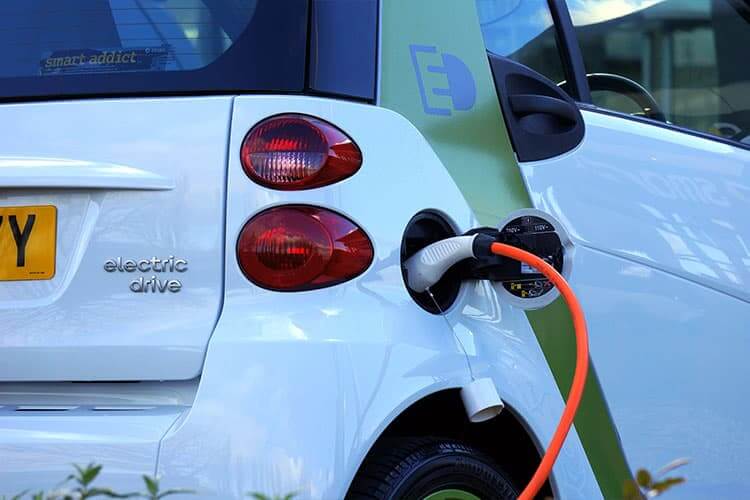The mining industry already has sophisticated mining conveyor systems in place, but battery manufacturing requires new consideration for how these strategic powders and granules are handled. Critical minerals and rare-earth elements are easily contaminated, highly corrosive, and pose multiple safety concerns for operators and the plant.
As global interest in the lithium refining process explodes, design of the lithium processing plant and other battery mineral processing benefits from considering new alternatives to traditional mining conveyor systems.
Powder handling for battery minerals applications
Two conveyor systems are well suited to powder handling for battery manufacturing: the aero-mechanical conveyor (AMC) and the tubular drag conveyor (TDC). Both are good choices for battery minerals, especially in the midstream processing or recycling phases of battery production. The fully enclosed design of both types of conveyors is essential to prevent product contamination. Each conveying system delivers the following benefits:
- Gentle handling protects the crystalline structure for fragile materials like lithium
- Sealed from atmospheric exposure
- Can be purged with inert gases, very little product retention after air purge cleaning
- Maximum yield achieved with total batch transfers cause no spillage or product loss
- Safely transfers sensitive and explosive materials
- Operator and plant safety is enhanced due to dust-free conveying
- Low-noise conveying adds to operator comfort
- Quick maintenance turnaround, with very limited exposure to the product
- Minimal number of moving parts contributes to high availability rates
- Small structural footprint
- Extremely low environmental impact of CO2 pollution
- Ability to wet wash and clean-in-place (CIP)
- Energy efficient
- Extremely low ESG impact of CO2 pollution
- Durable machinery that operates in tough conditions and high temperatures.
So how do you choose between an AMC and a TDC when it comes to processing the critical minerals and rare-earth elements used in battery manufacturing? Let’s look at how the two conveying systems differ and what you need to consider before purchase.
Aero Mechanical Conveyor (AMC) for battery minerals
The AMC is known for high reliability, high availability and little or no contamination risk, due to its fully enclosed system. It is one of the easiest technologies to integrate directly with other interfaces, including upstream and downstream equipment, and process line technology.
An AMC is ideal for battery minerals like:
- Cobalt
- Graphite
- Lithium carbonate
- Lithium hydroxide monohydrate
- Manganese
- Nickel
Additional advantages for choosing an AMC for battery mineral conveying include:
- Very high throughputs for equipment and drive sizes
- Transfer materials at any elevation
- Easily integrates with greenfield and brownfields process lines
- Mobile units available
Things to consider about AMC conveying for battery minerals:
- AMCs have shorter length limitations when compared to the TDC and often require interlinked, piggybacked conveyors to meet long and complex routes.
- They are not suited to being run dry for extended periods or with very low volumes of material.
- AMCs have a single discharge point.
Tubular Drag Conveyor (TDC) for critical minerals
Like the AMC, TDCs are well suited to abrasive materials. For applications processing abrasive materials with low throughputs, a TDC is probably a better choice. Rare-earth elements are a great example of critical minerals that benefit from transfer with a TDC instead of an AMC. These include free-flowing materials like:
- Dysprosium oxide
- HREY carbonate
- Lanthanum oxide
- Neodymium-praseodymium oxide
- Neodymium oxide
- Praseodymium oxide
- SEG carbonate
- Terbium oxide
It should be noted that TDCs are available in two styles:
- Lighter gauge cable TDCs are popular in food, manufacturing, and chemical industries and provide a good alternative to AMC conveyors for critical minerals and rare-earth elements. Look for an OEM like Floveyor who has experience with hygienic applications.
- A chain conveyor, also called a drag chain conveyor, is a TDC found in many heavy chemical and industrial applications. A chain TDC is not recommended for battery minerals processing.
The advantages to using a TDC for battery mineral and rare-earth elements include:
- Able to convey over long, multi-plane and complex routes
- Optimal for low throughputs
- Manages abrasive materials at low throughputs without damaging equipment
- Offers multiple inlet and discharge points
More information about alternative mining conveyor systems for battery manufacturing
Both the AMC and TDC are excellent choices for miners who are looking at conveying battery minerals. Your choice of conveyor should take into consideration throughputs and plant design when making your decision.
Floveyor is exhibiting at the AusIMM Critical Minerals Conference 2023 in Perth on 21-23 November. Visit us at stand 12 to have an in-person discussion about powder handling for your critical minerals.
Get in touch with Floveyor for advice on powder handling for your battery manufacturing operation. As powder handling specialists with a long history in both mining and chemical processing, we can help you select the best conveying system for your critical minerals operation.

